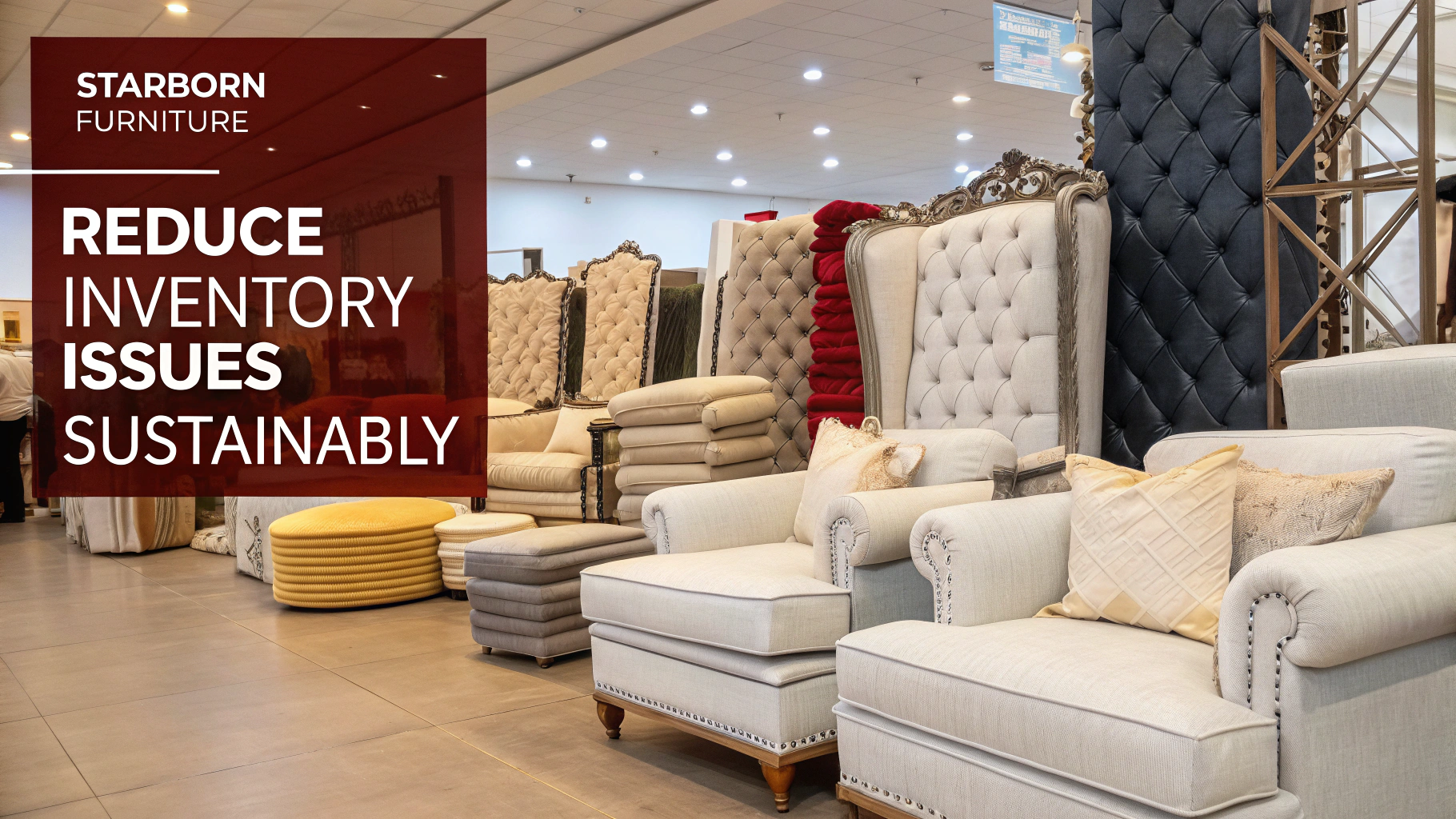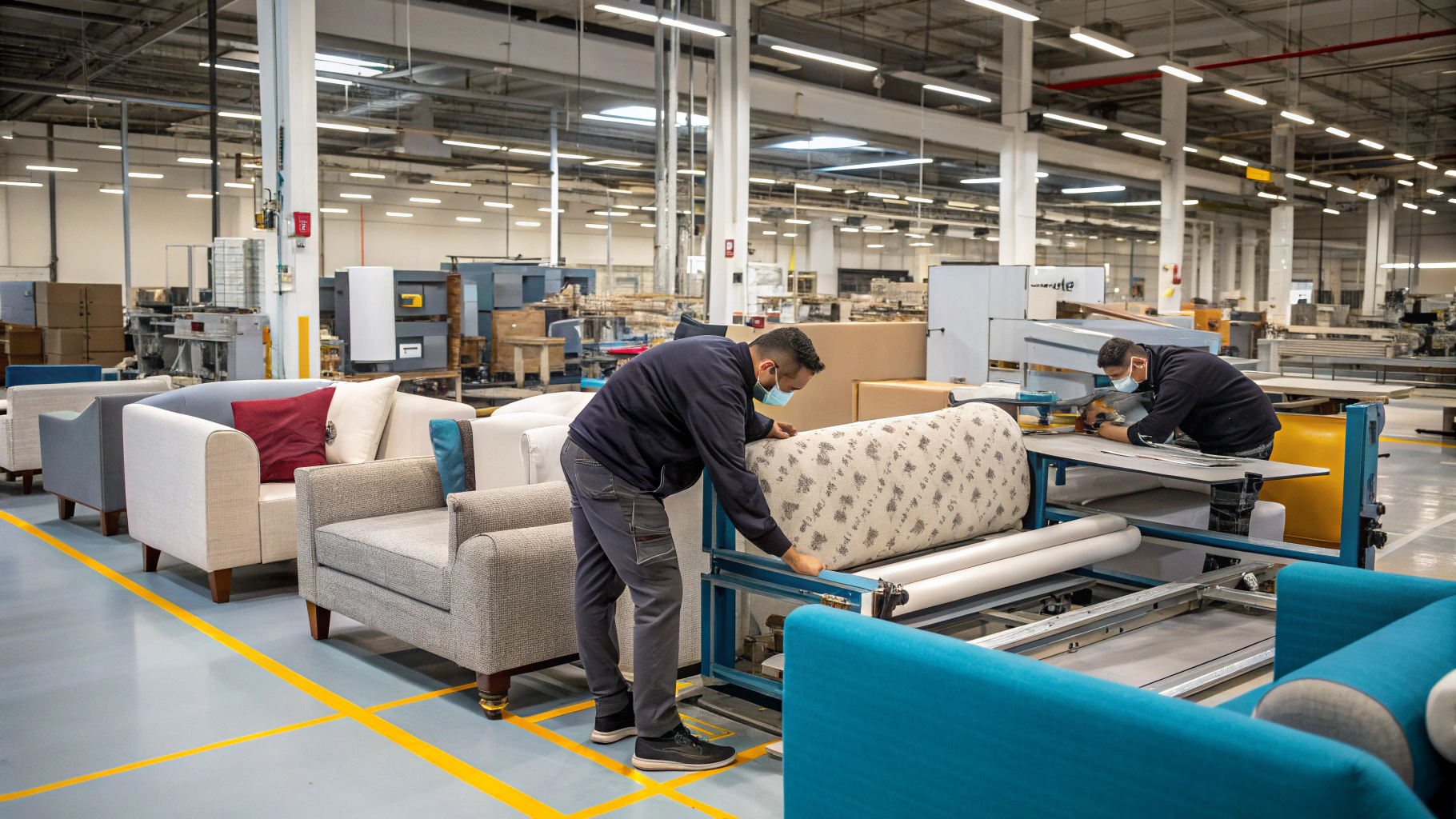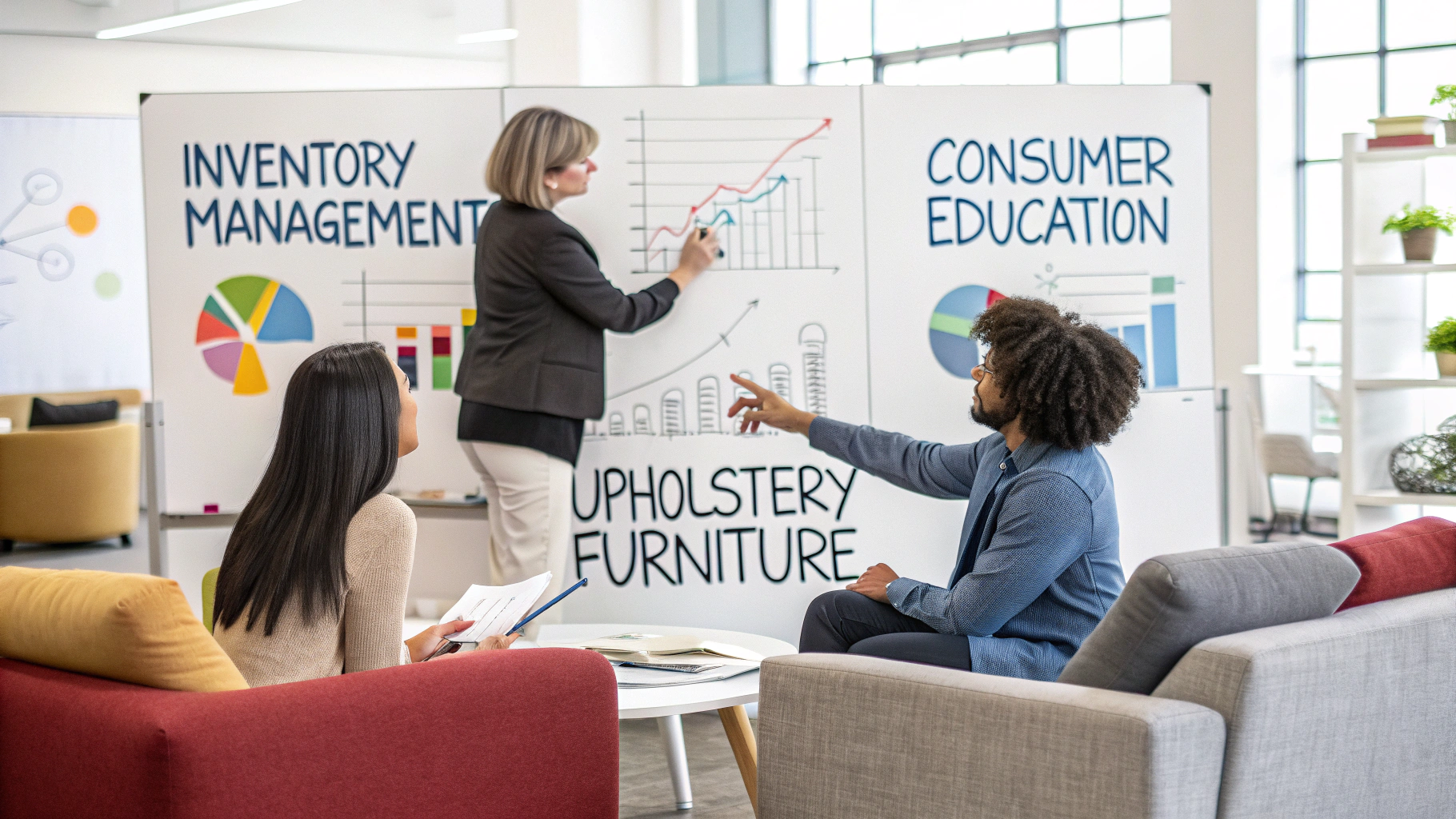You might be worried about overstocking and its hidden costs impacting your business. As the owner of Starborn Furniture, I know these challenges well. Our B2B platform connects independent retailers, designers, and end users, helping to reduce inventory issues sustainably. By leveraging our resources, small retailers can effectively protect their bottom line and enhance profitability.

How does quality certification mitigate overstocking risks? Quality certification is crucial for minimizing overstocking risks as it ensures compliance with standards like EN 12520, leading to more accurate inventory management decisions. By partnering with BSCI-certified suppliers, businesses like ours enhance product demand forecasting, reduce compliance pressures, and achieve more refined inventory control.
How Does Quality Certification Mitigate Overstocking Risks?
Quality and compliance matter greatly in inventory management. Many European retailers grapple with meeting EN 12520 standards, which complicates decision-making in inventory. Quality certifications play a pivotal role here. By ensuring compliance, these certifications allow businesses to fine-tune their inventory, adapting to demand accurately.

Typical Customer Pain Points + Data Correlation
Retailers face compliance headaches with EN 12520 standards. These regulations make inventory decisions stressful. They directly affect how we manage supply, leading to challenges like overstocking. Data shows that many retailers struggle with maintaining accurate stock levels, highlighting the role of quality certification.
Starborn's Solution + Certification Endorsement
At Starborn Furniture, we hold BSCI certifications to address these challenges. Our rigorous quality checks ensure that products meet standards, reducing the likelihood of overstock. In collaboration with our certified partners, we enhance our ability to predict demand, ensuring that inventory aligns with actual needs.
Excerpt from Customer Success Story
A retailer in the UK successfully reduced overstock by 15% within six months of partnering with us. By relying on our transparent certified supply chain, they gained clearer insights into demand patterns. This success was a testament to how quality certifications1 can directly influence inventory balance.
Ensuring Transparent Supply Chains in the Production Phase
Ensuring a transparent supply chain is vital for businesses to avoid overstock or stockouts. Many firms struggle due to gaps in coverage and data access. Addressing these issues fosters efficient inventory management, promoting business reliability.

Common Industry Issues
Supply chain visibility remains an issue. Companies often face overstock or stockout situations due to blind spots in logistics. Gaps in real-time data access mean missed opportunities to adjust supply. These issues complicate maintaining perfect inventory levels in a dynamic market landscape.
Demonstration of Platform's Innovative Features
Our digital platform at Starborn provides real-time tracking of inventory levels, fostering transparency. Retailers benefit from having access to comprehensive supply data. This feature aligns supply and demand while minimizing faults caused by logistical invisibility.
Joint Development Case with Designers
Working with German designers, we implemented just-in-time manufacturing strategies. This approach led to a 20% reduction in inventory holding. By enhancing collaboration, we can serve tailored solutions that adapt to market trends and minimize surplus efficiently.
Adapting Production Systems for Flexible Inventory Management
In flexible inventory management, aligning production systems with changing trends is key. Establishing versatile systems is challenging. However, adjusting manufacturing processes to enable quick turnaround can lead to better inventory management results.

Industry Pain Points: Expectations vs. Reality
Creating production flexibility while adhering to local trends is difficult. The European market quickly evolves, influencing demand. Retailers struggle to adapt core manufacturing to these changes without overextending resources or stacking up excess stock.
Starborn's Scheduling Solution
Our C2M selection process allows us to adjust production schedules as needed. We maintain the capacity to manufacture over 2000 units monthly, which accommodates swift market changes, offering retailers an advantage by ensuring immediate response to client demands.
Customer's Enhanced Market Position
A French designer who integrated our solution saw a 25% faster turnaround time. This enhanced efficiency helped them meet client-specific designs faster. By aligning production timelines with real-market trends, they leveraged improved customer satisfaction and reduction in overstock.
Achieving Long-Term Value Through Sustainable Material Usage
Sustainable material use becomes essential for long-term value in retail. As consumer demand shifts, unsellable overstock presents a risk. Focusing on sustainable materials2 ensures alignment with consumer expectations and reduces the likelihood of inventory misalignment.
[^2] and furnishings in an eco-friendly design.](https://starborndesign.com/wp-content/uploads/2025/03/1741840573521.6824.webp)
Customer Concerns in Material Choices
Retailers report increasing demand for eco-friendly products. As consumer preferences evolve, so does the risk of overstock of non-sustainable goods. Retailers are pressured to predict material popularity accurately to avoid accumulation of unsold inventory.
Starborn's Eco-Centric Material Approach
We prioritize sustainable materials2 through partnerships with certified suppliers. Our eco-certification assures retailers of downstream demand alignment. This approach not only meets current demands but also positions our partners ahead in sustainability trends.
Value Realized by Clients
A Dubai-based retailer saw a 30% sales rise by marketing FSC-certified Starborn products. This approach matched consumer preferences for sustainability, highlighting the benefits of eco-friendly goods and incorporating materials that resonate with market demands.
Collaborative Innovation in Design to Prevent Overstock
Collaborating on design innovation reduces overstock risk. Understanding and adapting to market gaps plays a critical role. Offering designs suited to specific cultural preferences boosts market success and minimizes costly unsold inventory accumulation.

Market Gap Understanding
Dubai’s market requires culturally suitable designs. Yet, poor local adaptation leads to mismatched inventory. This issue necessitates a deeper understanding of market nuances and demands for cultural adaptation to succeed in this region.
Platform Connectivity for Localized Design
Starborn’s platform connects us with local designers to forge synergy. This collaboration involves custom input and feedback loops. The result is a well-aligned product inventory closely matching client demographics and reducing risks of excess furniture stock.
Case Study: Cultural Design Synergy
Using our platform, designers tailored furniture designs for regional trends. This resulted in 20% less excess inventory. Such cultural adaptation helped tap into the market with precision, reflecting the positive impact of leveraging design collaboration.
Enhancing Consumer Interaction to Avoid Overstocking
Educating consumers while managing production is intricately tied to inventory balance. Engaging them openly about new trends enhances understanding and streamlines stock accuracy. Innovative approaches to consumer interaction can lead to optimal inventory management.

Consumer Education Pain Points
Introducing new lines while avoiding overproduction is challenging. Stock misconstrued as dormant arises from ineffectively engaging consumers. Market dynamics require educating local buyers on available choices without oversupplying inventory.
Starborn’s Interactive Consumer Education Toolkit
Our interactive toolkit connects us with consumers meaningfully. The digital marketing platform provides purchase trend insights. This engagement reduces surplus by equipping retailers with tools to predict demand effectively, enhancing marketing efforts and stock control.
Positive Outcomes for Retail Partners
In France, our partners increased stock turnover by 18% utilizing the toolkit. By drawing on data-driven insights, they accurately forecast demand, mitigating dormant stock and achieving a tighter market fit, which exemplifies the power of consumer interaction.
Environmental Certifications: A Path to Optimized Inventory
Environmental certifications direct the path to optimal inventory levels. Retailers are urged to integrate sustainable practices into operations. Aligning with certifications espouses responsibility and boosts inventory efficiency, reducing both waste and carbon footprint.

Pressure from Environmental Standards
Retailers face pressure complying with environmental standards like BSCI. Such requirements push towards maintaining optimal inventory levels. Balancing compliance and sustainable operations is crucial in preventing wasteful practices and is mandated increasingly by global markets.
Integration of Starborn's Eco-Certified Systems
Starborn leverages eco-certified systems to blend operational efficiency with environmental ethics. This adherence to standards yields greater compliance clarity, standardizing practices and achieving sustainable inventory management across partner networks.
Real-World Impact
A German retailer aligned with our eco-certification processes reduced their carbon footprint and inventory waste. This realignment culminated in operational adjustments averting overstock and setting a benchmark for sustainable retail practices through optimal inventory management.
Conclusion
Managing inventory efficiently protects businesses from overstock challenges. Through certifications, transparency, adaptive systems, sustainable material usage, design collaboration, consumer engagement, and environmental compliance, Starborn Furniture enables partners to thrive with minimized inventory risks.

